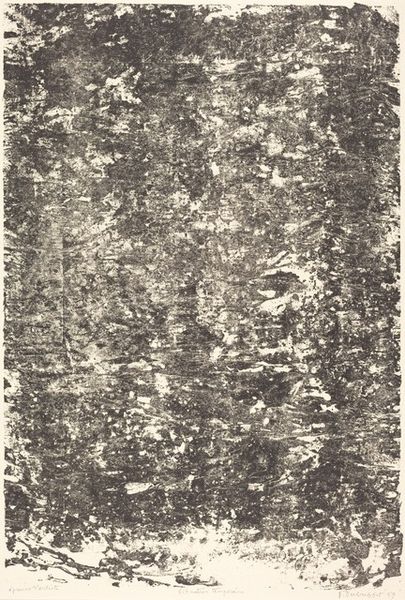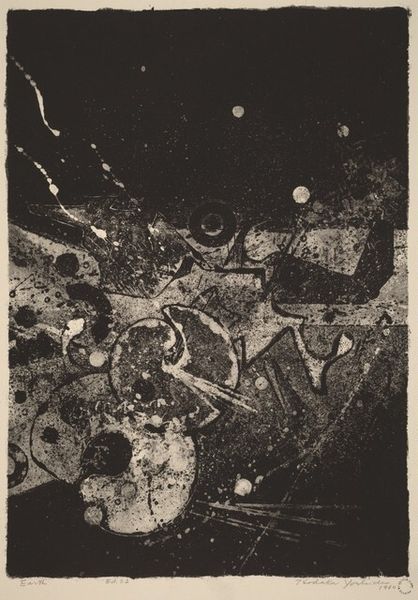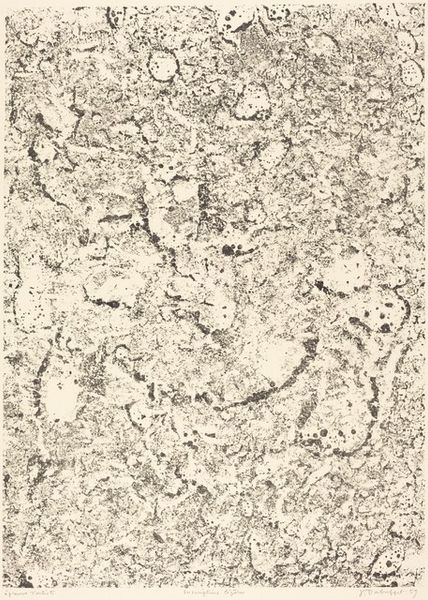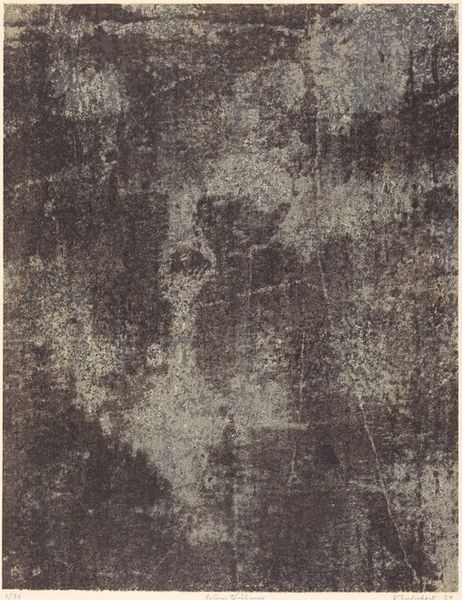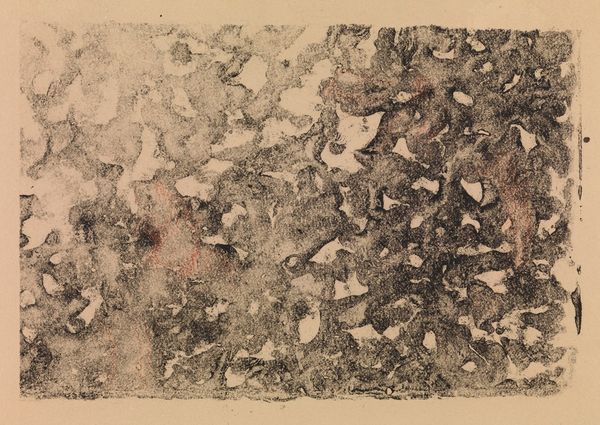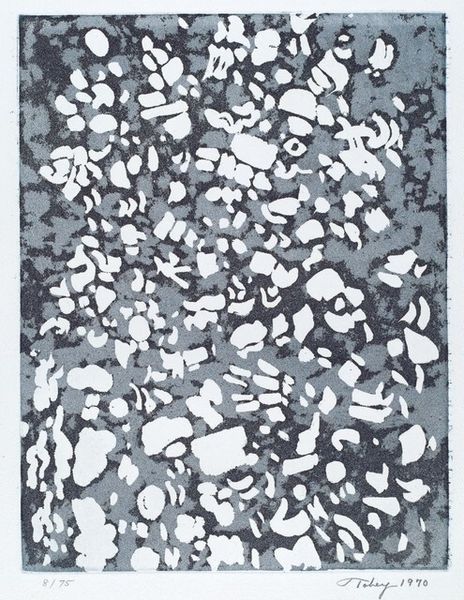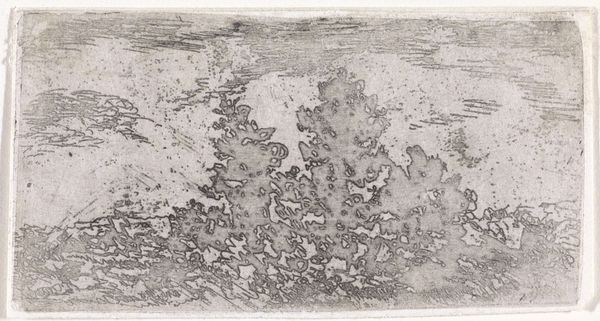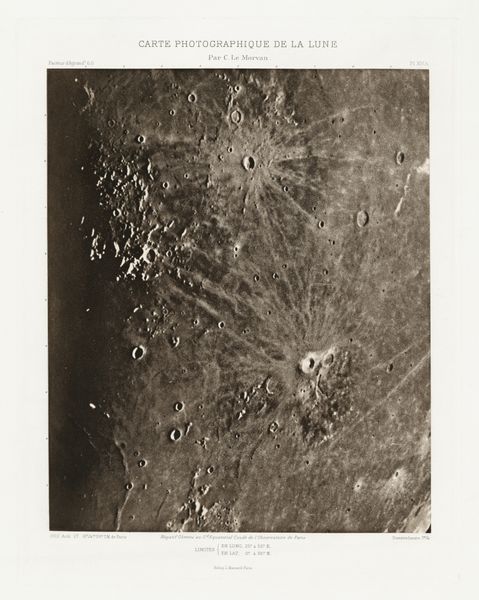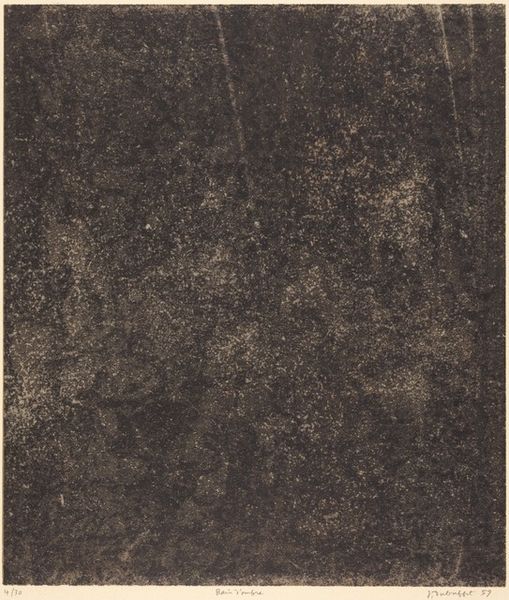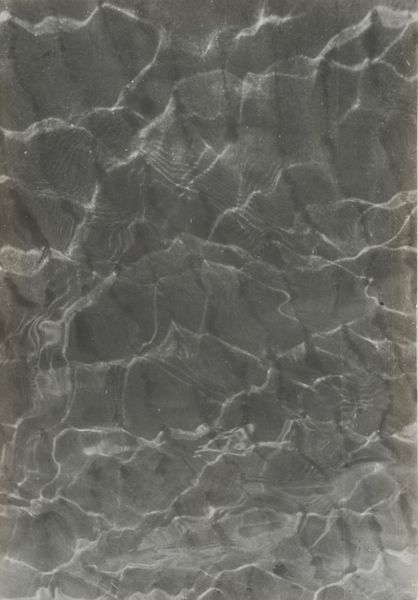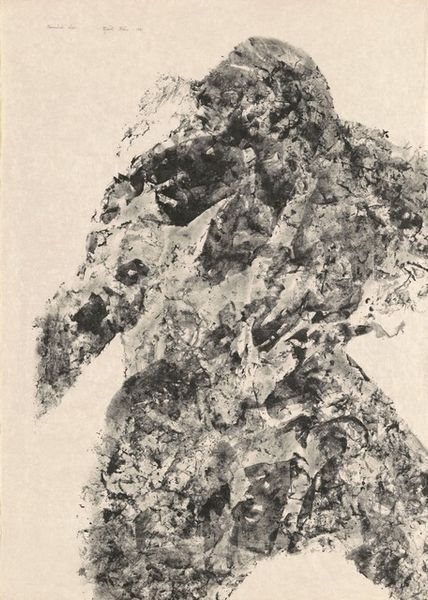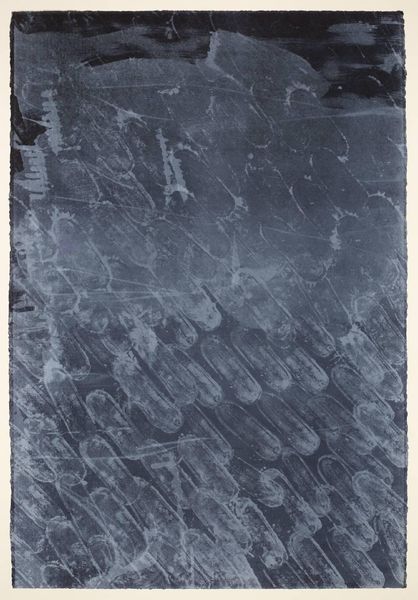
mixed-media, print
#
mixed-media
# print
#
art-informel
#
matter-painting
#
abstraction
Dimensions: image: 53.6 x 39.1 cm (21 1/8 x 15 3/8 in.) sheet: 66.5 x 51 cm (26 3/16 x 20 1/16 in.)
Copyright: National Gallery of Art: CC0 1.0
Editor: So, this is Jean Dubuffet's "Incongruities (Disparates)" from 1959. It's a mixed-media print, and I'm immediately struck by its texture. It's almost geological, like looking at a close-up of stone. It feels very raw. What's your take? Curator: It is incredibly tactile, isn’t it? Looking at Dubuffet's work through a historical lens, particularly within the context of Art Informel, reveals a deliberate rejection of formal artistic traditions. He was active at a time where artistic institutions still valued tradition over raw art. It challenges traditional notions of beauty. What do you make of this rebellion, the seeming embrace of ugliness, especially within the context of postwar Europe? Editor: I think it’s fascinating! After so much destruction and trauma, maybe beauty just felt… inadequate? Like it couldn’t express the reality of the world. I see it as a desire to confront things head-on, even the unpleasant stuff. Curator: Exactly. Dubuffet called this "matter painting," emphasizing the physical qualities of the materials. What political or societal message might come from a piece of work so deeply textured? Editor: Hmmm, I see. So, in a way, he’s using these discarded materials and rough textures to critique the sanitized, idealized images that often dominate public discourse. By embracing the "ugly," he’s giving voice to those who are typically ignored or marginalized. It’s about visibility, right? Curator: Precisely! And the lack of any central figure removes a point of focus. How does that affect the viewing public? Editor: The viewer has no direction on how to interpret, or even look at, the image. The shapes and the lack of focus allows for free interpretation without any societal influence. Curator: Absolutely. And how does the work relate to other contemporary artists such as Picasso or Pollock, artists dealing with fractured forms in Europe or America at the same time? Editor: This has really given me a broader perspective on what's going on in this print. Thinking about its place in the history of art is very enriching. Curator: Indeed, understanding the societal currents shaping Dubuffet and his contemporaries makes appreciating works like "Incongruities" all the more relevant and compelling.
Comments
No comments
Be the first to comment and join the conversation on the ultimate creative platform.
